There’s something quite extraordinary about listening to a vinyl record; just the touch of a stylus picking up vibrations, converting and amplifying those subtle movements into pure, crystal clear sound.
A record player’s stylus plays a vital role in this process, determining how the needle runs along the groove of your record and captures movement; that’s why it’s so important to select your stylus carefully. With a sea of styles and prices out there, choosing the right option can feel like looking for a needle in a haystack.
At Audio-Technica, we’ve been producing vinyl cartridges since our inception; and with over half a century of Japanese audio innovation to call upon, we’d like to think we know a thing or two about choosing the perfect stylus to reinvigorate your beloved vinyl collection.
Your Guide To Record Player Stylus Types
There are five main needle types to be aware of: Conical, Elliptical, Microlinear, Shibata and Special Line Contact styli. These names refer to the shape of the needle head and each has different advantages in different use cases:
Conical
A good all-rounder, literally. Its head is rounded with a radius of around 0.6 mil which touches the centre of the record groove walls, though 78 RPM records will need a much larger needle. Conical styli are often more budget friendly, producing a rich, solid sound.
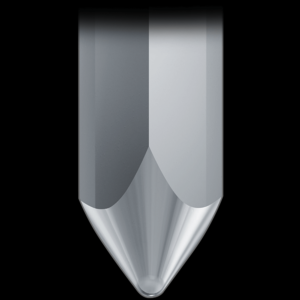
Elliptical
The front part of the needle rides in the centre of the record groove, while the smaller side makes more contact with the groove walls. This helps produce a more enveloping sound, as an Elliptical stylus tracks the vinyl grooves with greater precision.
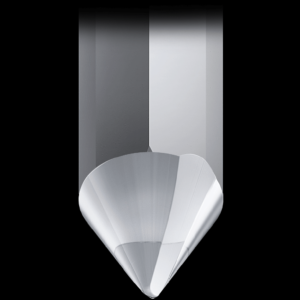
Microlinear
These styli closely match the head used in the production of the master disc, producing an incredibly authentic sound thanks to extremely accurate tracking. The unique shape of the tip wears more evenly too, which extends the life of both the record and your stylus.
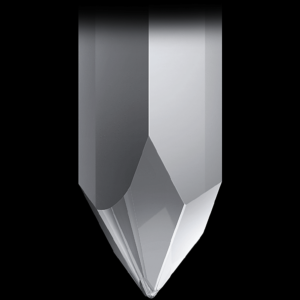
Shibata
A true result of Japanese audio-engineering ingenuity, the Shibata stylus was originally designed for records with four channels of sound. These greatly reduce vinyl wear and tear compared to other needles whilst also producing a well-balanced sound.
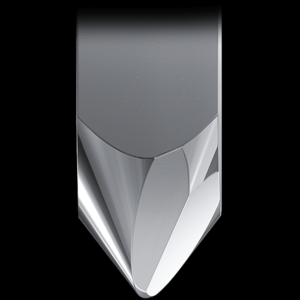
Special Line Contact
This premium cartridge styli offers high frequency response, low distortion and low record wear thanks to its long vertical contact area and optimum tip design. Special Line Contact needles are not a budget option, though keen audiophiles will relish the difference in range and clarity.
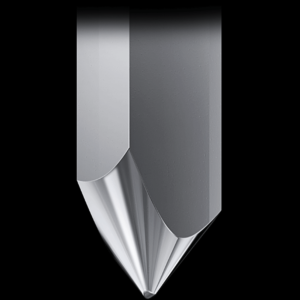
Round Or Square Shank?
There are two types of stylus shank: round and square. A stylus shank connects the tip to the cantilever, helping to position the stylus tip in the record groove. A square shank stays in place firmly as it is mounted in a laser-cut square hole in the cantilever, locking the stylus in precise alignment with the record groove. Round shank styli may be more affordable, though round shanks can be more difficult to align when affixed to the cantilever.
Audio-Technica’s Conical and Elliptical styli are round shanks, whereas our Microlinear, Shibata and Special Line Contact needles are square shanks. Generally speaking, high quality styli are square shanks due to it providing a more precise alignment with the groove.
Upgrading Your Stylus For Superior Sound
The shape of the needle head can make a significant difference in playback quality, so it’s important to choose your stylus wisely. If you have a Moving Coil cartridge, you won’t be able to replace or upgrade your stylus as it is bonded to the cartridge itself. Moving Coil cartridges are highly regarded as they produce superior sound clarity with lower distortion.
However, if you select a Moving Magnet cartridge you have the option to replace or upgrade your stylus - ensuring consistently stunning quality without the worry of needing to replace your whole cartridge when its needle wears out.
All this said, you should be aware that your needle needs to accompany a quality cartridge to deliver premium performance. Audio-Technica’s entire VM500 and 700 ranges have upgraded internal components and can use each other’s needles which means these cartridges will significantly outperform others even with the same needle type and stylus shape.
For optimum sound quality - perfect for discerning audiophiles - select a high quality Dual Moving Coil cartridge complete with a Special Line Contact nude stylus.
Diamonds Are Almost Forever
Almost all cartridges feature a diamond stylus, which gives them that long 300 – 1,000-hour playback lifespan (though, as discussed above, whether your stylus is replaceable depends on the cartridge type). Diamond is the hardest material in the world so it is the perfect crystal for a vinyl player needle: durable and reliable.
A stylus also needs to have a small tip to enable effective tracking; using diamond allows the needle to be crafted in a way that produces detailed sound whilst maintaining durability.
There are two main types of diamond stylus:
Nude Stylus
The ‘nude’ stylus is solid diamond from top to bottom. Because of their lower mass, nude styli track vinyl records more accurately. Enhanced pickup from the vinyl to the cartridge head produces a better sound, helping you get lost in the music.
Bonded Stylus
The bonded stylus is metal with a diamond material industrially adhered to the tip. Generally speaking, bonded styli are heavier and that increase in mass can inhibit the frequency from the stylus to the cartridge, ultimately producing a lower quality sound.
Choosing Your Audio-Technica Stylus
To enjoy superior sound on a budget, we recommend looking for a Moving Magnet, Elliptical, bonded cartridge such as our VM95E. For a step-up in sound reproduction and clarity, consider the nude version: VM95EN.
For a more premium option, opt for the AT-ART9XI. It features dual moving coils and a special line contact stylus on a 0.28 mm diameter solid boron cantilever. Listen closely and sink into sound - our flagship phono cartridge is capable of reproducing even the most delicate expressions so you really will never miss a beat.
Bookmark Audio-Technica’s Newsroom for more information about upgrading or replacing your turntable cartridge and needle.